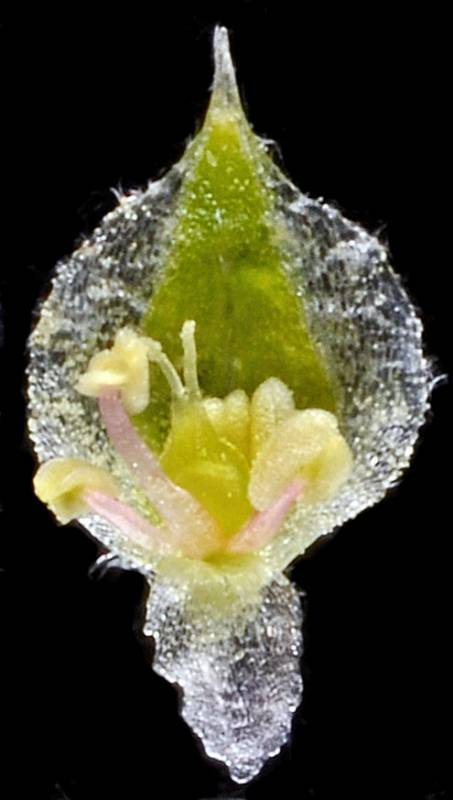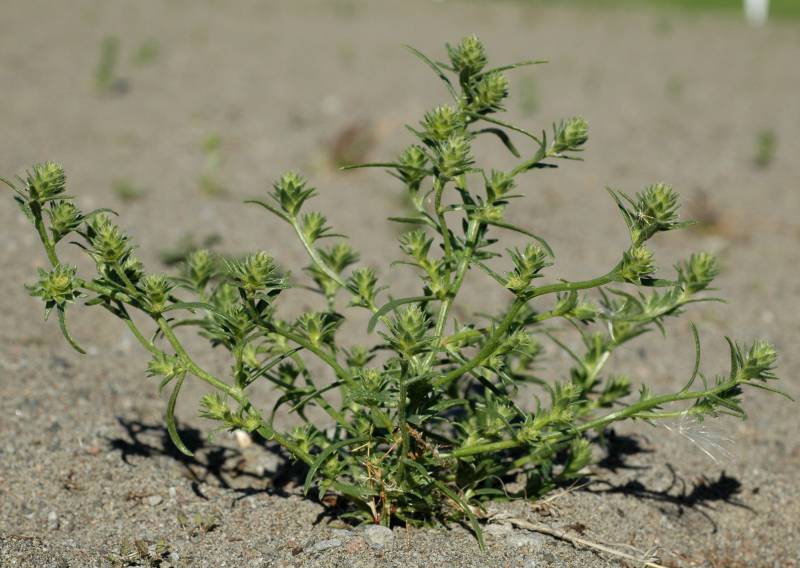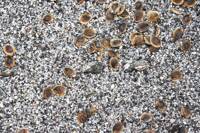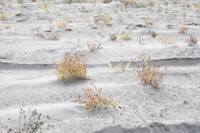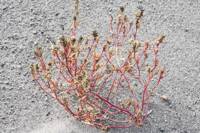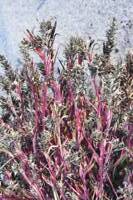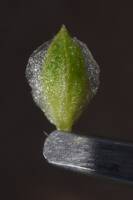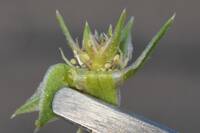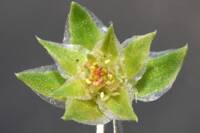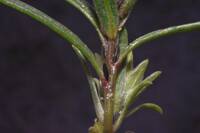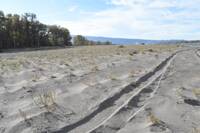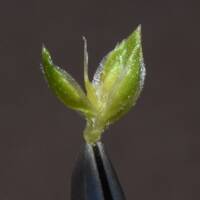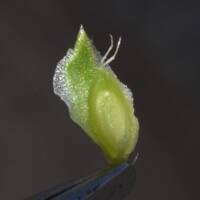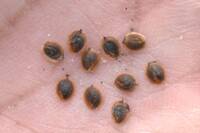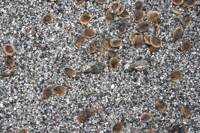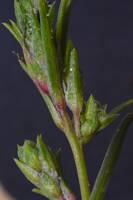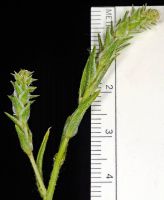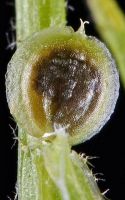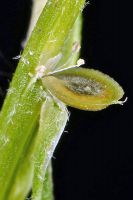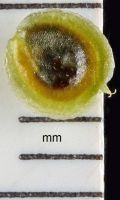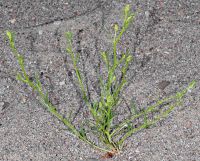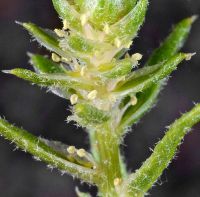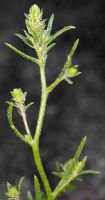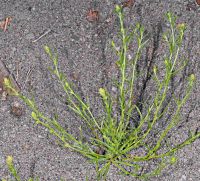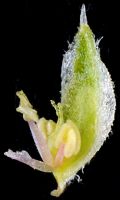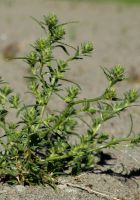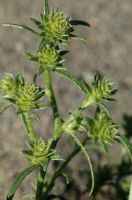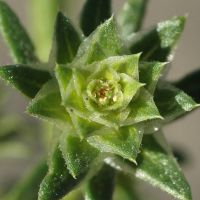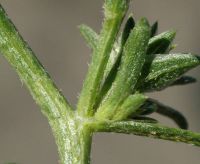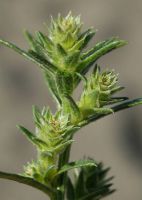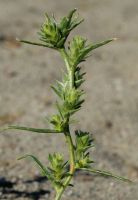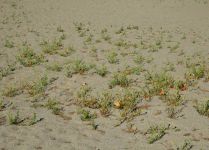Distribution: Occurring along the Columbia River and east of the Cascades in Washington; southwestern Washington to northern Oregon, east to west-central Idaho; also in southwestern British Columbia.
Habitat: Dunes and sandy shorelines of desert areas and riverbanks.
Flowers: August-October
Origin: Native
Growth Duration: Annual
Conservation Status: Not of concern
Pollination: Wind
Spreading-erect annual, freely-branched especially near the base, the stems up to 6 dm. tall, often reddish-tinged, the herbage often covered with stiff, stellate hairs.
Leaves alternate, entire, linear to linear-lanceolate, 1-5 cm. long and up to 4 mm. broad, tipped with a sharp point, narrowed to short petioles.
Plant floriferous nearly throughout; flowers in short, axillary, crowded, bracteate spikes 1-3 cm. long and 4-6 mm. thick; bracts lanceolate below, broader above, 5-9 mm. long; perianth a single, papery scale opposite the bract; stamens 3-5, exerted; styles 2.
Fruit obovate to orbicular, 3-4 mm. long, strongly flattened and winged.
Publication: Novon. 5: 345, fig. 1A. 1995.
PNW Herbaria: Specimen records of Corispermum pacificum in the Consortium of Pacific Northwest Herbaria database
WA Flora Checklist: Corispermum pacificum checklist entry
OregonFlora: Corispermum pacificum information
E-Flora BC: Corispermum pacificum atlas page
CalPhotos: Corispermum pacificum photos

